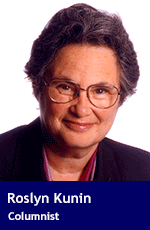 Want to strike fear into the heart of any Canadian?
Want to strike fear into the heart of any Canadian?
Just mention wait times.
We’re all really proud of our universal, single-payer medicare system, especially when we compare it to the situation in the United States.
However, it’s not quite perfect.
A major imperfection is the length of time between becoming aware of a need for medical services and actually receiving them.
We gratefully acknowledge that should our medical need be immediately life threatening, we’ll be taken care of. However, if it’s not our life that’s at risk but our level of comfort, our mobility or other physical functions, then months and years can pass before we see a suitable medical specialist and receive the needed treatment.
That’s one reason why we should appreciate the contributions of Dr. John Street. Street trained in Ireland and Great Britain and practises and does research in areas related to the spine. He works at the Vancouver Spine Surgery Institute, to the benefit of the Vancouver General Hospital (VGH) and many organizations doing research on the spine and its treatment.
If you have a back problem, the time between your first visit to a doctor and seeing a spinal surgeon can be as long as two years. This doesn’t make patients happy and it didn’t make Street happy, especially since he knows that up to 90 per cent of those who endured the wait to see a surgeon had conditions that didn’t require surgery and could be treated by simpler and easier processes such as physiotherapy.
So Street set up the Rapid Access Assessment Program at VGH, to which doctors could refer patients with back problems, and where they could be seen by physiotherapists and other medical professionals in days and weeks rather than months or years. Those who didn’t need surgery could immediately begin other treatment options and the wait list for those that did need surgery became shorter.
But that’s not all that Street has done and is doing. Technology has made a major new resource – data – available in health care and other fields. That data provides great detail about everything we do, who we do it to, and what works and what doesn’t.
However, data is useless until we turn it into information and the research turns vast quantities of numbers into patterns, facts and descriptions that we can use. And we need to go one step further and apply the results of that research in hospitals and on patients.
The Spinal AdVerse Events Severity system (SAVES), under a team lead by Street, collects data on all the adverse events (bad outcomes to us laypeople) that occur in their area and then determines what factors can reduce or eliminate them. One would think that this logical approach would be widespread but it’s really very rare. Too many medical personnel are too busy dealing with current pressing problems to try to determine how to reduce or solve those problems.
Street’s approach of collecting data, turning it into information and not hesitating to introduce new information and innovations greatly improves patient outcomes. It also saves the health-care system (and taxpayers) piles of money.
One simple idea is to break down the hospital silos.
Spinal surgery patients were usually only seen by spinal specialists. However, many such patients, particularly accident victims, had more wrong with them than their spines. Allowing other specialists into the spinal ward meant better outcomes and saved millions of dollars.
It’s not surprising that Street is very prominent in his field, has dozens of peer-reviewed published articles and has received numerous awards.
What is surprising is how little uptake there has been on his approach, even though better patient outcomes and cost savings have been well documented. Also researched and documented is the applicability of the SAVES model in international settings beyond Canada.
Since we can’t clone Street, we need to make leaders and decision makers in health care and government aware of his work and the need to take advantage of it.
Troy Media columnist Roslyn Kunin is a consulting economist and speaker.
The views, opinions and positions expressed by columnists and contributors are the author’s alone. They do not inherently or expressly reflect the views, opinions and/or positions of our publication.

